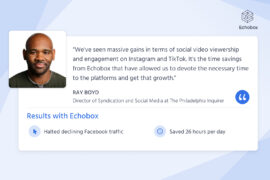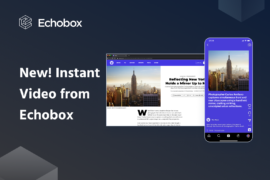How well does your Facebook Page perform?
The question resonates with publishers around the world looking to maximize social media traffic through inclusion in Facebook’s News Feed, but determining an accurate answer is complex. Any number of factors can affect your page’s performance, and with constant updates to the way Facebook’s algorithms function, publishers are left in the difficult position of trying to understand how these changes impact their traffic, whilst adapting the finer points of their social media strategy. In recent months, for example, reports emerged that Facebook would look to decrease the amount of political content in its News Feed in some countries outside the US through a tweak in its algorithm. This change would deprioritize certain “engagement signals” such as the likelihood that political content is shared, in a move they concede could have implications for news publishers.
The internet is full of varying advice on how to enhance the reach and engagement of Facebook posts, but mostly this advice is not relevant to publishers, nor does it take into account the distinctive web of circumstances that makes each publisher unique. Each publisher’s content, audience demographic and engagement patterns are different and constantly changing.
It’s more important than ever that social media teams can determine how their social pages are performing. But beyond tracking metrics such as clicks, impressions and likes on individual posts, how can you assess the overall health of your Facebook Page? How does your page health affect visibility in the News Feed, and how does it translate into referral traffic? And how can you compare your performance to other publishers?
Through our research, we’ve identified three key factors that have a significant impact on how a publisher’s Facebook Page performs. By reverse-engineering the Facebook algorithm, we have determined that strong performance in each of these areas increases the likelihood of content being promoted into the News Feed, and therefore impacts how much visibility and traffic that content can generate.
Read on for the 3 key steps to boosting your Facebook Page’s performance and increasing traffic.
1. Make sure shares are spaced sufficiently far apart
There are many guides online that purport to know how long you should leave between Facebook posts. The unfortunate reality is that there are no hard and fast rules, especially when it comes to publishers. We ran a study to look at the effects of post spacing and Facebook’s algorithm on content visibility in the News Feed. We discovered that publishers are being penalized for posting content both too close together and too far apart, but the exact gap that constitutes a spacing sweet spot differs by publisher, even within the same content vertical and country.
In this example from a reputable East Coast publisher in the US, a number of posts have been shared too close together, leading to clashes and poor Facebook Page health. As a result, these posts are penalized by the Facebook algorithm and this publisher’s visibility and traffic is vastly reduced.
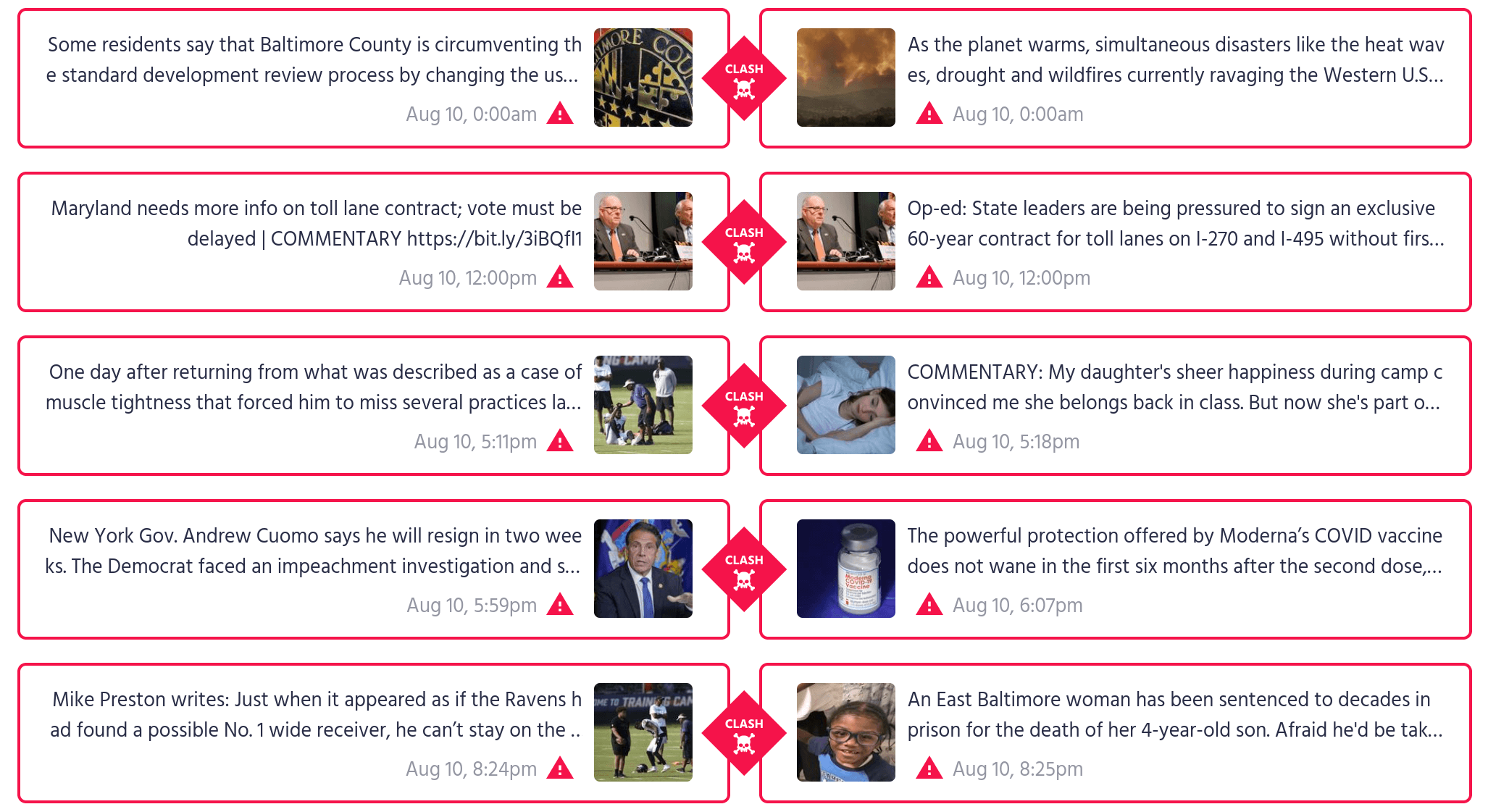
2. Share enough content on Facebook throughout the day (and night)
You might assume you can avoid share clashes by sharing fewer posts. But reducing the amount of shares doesn’t necessarily mean better performance on Facebook. In fact, sharing too much and too little has a detrimental impact on Facebook Page health and your resulting traffic. Publishers who don’t share enough content throughout the day are missing out on significant traffic opportunities. Most often, drastic reductions in share volume occur at night when newsrooms thin out for the evening. But even at night, publishers can still achieve substantial amounts of traffic.
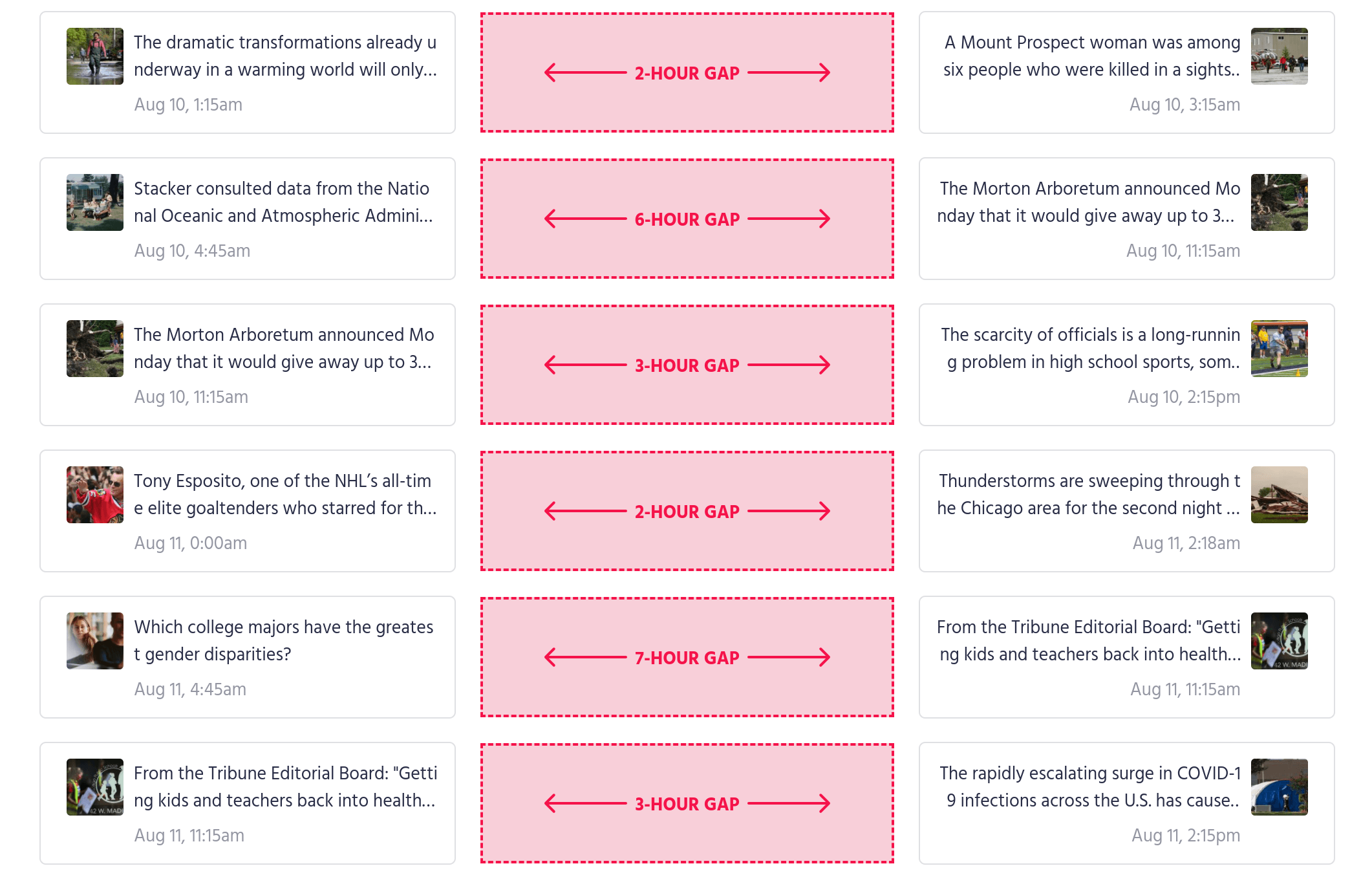
Above is an example from a large news publication in the United States. During each of these gaps between Facebook posts, the publisher has lost out on referral traffic. This is a fairly common pattern for many publishers: social media posts decline in number and frequency during the early morning hours and pick up again later in the day as more content is produced. Resharing existing articles during this time is a simple and efficient way of increasing traffic, and using Echobox’s AI, posts can be automatically curated, optimized and shared at the best time, even when there is no one in the office.
We talked to Laura Sutil Berjón, the Social Media Manager at Zinet Media, one of Spain’s largest publishing conglomerates with titles such as Marie Claire. Zinet Media spied an opportunity to optimize timing not just for their domestic market, but also other Spanish language markets across the globe where celebrity content especially performs well. This means that even when traffic drops at night in Spain, Zinet Media find a ready replacement by sharing enough content throughout the night, using automation, to cater for South America.
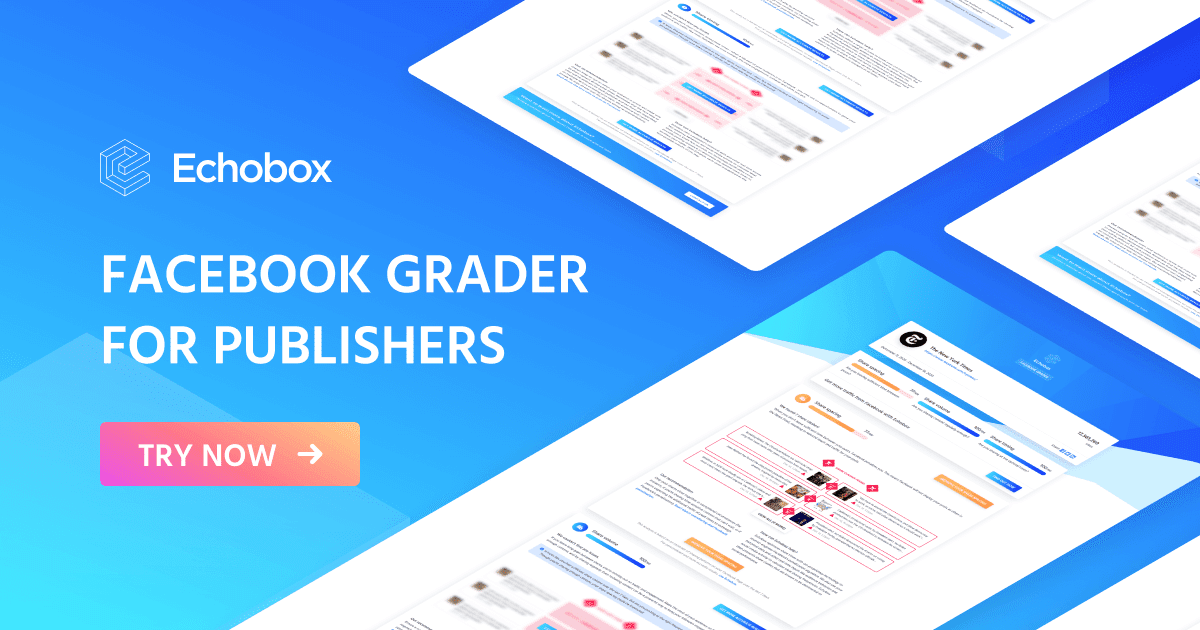
3. Post at peak times for your Facebook audience
A third influential factor in a publisher’s Facebook Page health is post timing. Conventional wisdom says that there are industry-wide peak times to post on Facebook and generate the most traffic. We put this theory to the test and the results couldn’t have been clearer: there aren’t. This shouldn’t be surprising — there’s no logical reason why Publisher A should consistently gain more pageviews at 11.08 on a Tuesday — nor is it particularly useful if it were true — not all content can be posted at the same, specific time and the effectiveness of that strategy would be diminished if it was. In reality, two similarly-sized publishers in the same country will experience significantly different peaks and troughs in social media traffic throughout the day and these variations will change from day-to-day and week-to-week. Just take a look at this graph…
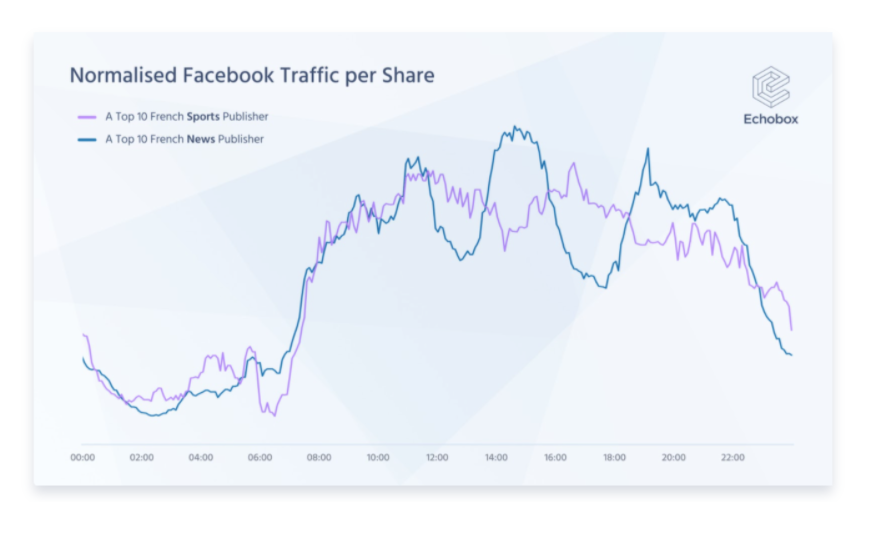
If the sports publisher had posted an article at the best time for the news publisher, it would be posting at what was its own worst daytime dip in traffic.
To maintain a healthy Facebook Page that earns visibility and traffic, it’s therefore critical to post at the ideal times for your audience.
But finding the optimal time to post or accurately determining the volume and spacing of shares for a particular publisher requires an enormous amount of data analysis at such regular intervals as to make it essentially impracticable for all but the most lavishly stocked newsroom. How, then, can publishers find out exactly how well their Facebook Page is performing and where health improvements are necessary?
Assess performance with a free tool: the Facebook Grader
We’ve developed the world’s first Facebook Grader, designed specifically to allow you to ascertain the health of your Facebook Pages and even compare them with those of your competitors. Anyone can use it, for free — simply input your email address, the URL of a Facebook Page and select the correct timezone.
The Facebook Grader will send a report straight to your inbox with an analysis of the Facebook Page across the three vital factors affecting post inclusion in Facebook’s News Feed: spacing, volume and timing. By discovering exactly where improvements are needed, you will be able to tweak your sharing patterns and analyze the impact on your Facebook traffic.
These crucial insights are vital to getting the very best out of your social media strategy. Free and easy to use, the Facebook Grader will help you take immediate action to increase your reach on Facebook and resulting traffic.

